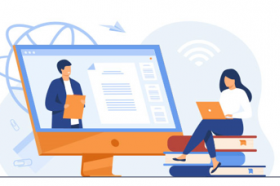The Covid-19 pandemic and the measures taken by governments to contain the virus have created major challenges for the training sector. In this context, it became necessary to look for alternatives to face-to-face training. Moving the training to a virtual classroom ensured educational continuity.
Digital training offers many opportunities and potentials, some of which go far beyond the possibilities of face-to-face learning. Nonetheless, moving training to the virtual classroom also presents difficulties and challenges for both learners and teachers/trainers. The guides developed by the e-ManTRA project partners attempt to address these.
Guide with innovative pedagogies for teachers/trainers
This guide has been developed to help transport and logistics teachers and trainers deal with the difficulties and obstacles associated with distance learning.
This document is composed of 4 parts and aims to provide teachers and trainers with:
- guidelines on how to transfer elements of training that have historically been delivered in a face-to-face setting to a virtual environment.
- an inventory of 55 teaching methods, tools and materials suitable for distance and online learning.
- pedagogical scenarios for teaching learning objectives specific to transport manager training (EQF Level 5).
- an online decision support tool enabling teachers and trainers to quickly find the most suitable distance learning modality for their needs.
Guide for learners
Distance learning confronts learners with a new working environment: physical distance from their classmates and trainers as well as a social and material setting different from a traditional classroom. All these elements can disturb the learner's learning and success.
To reduce these difficulties and enable learners to optimise learning at a distance, a self-assessment quiz and guide were developed as part of the e-ManTRA project.
The online quiz allows learners to identify their strengths and weaknesses in relation to distance learning and provides them with targeted good practice examples.
The good practices are presented in a concise format and organised as follows:
- General advice
- Tips for preparing before the lesson
- Tips during the lesson
- Advice after the lesson

